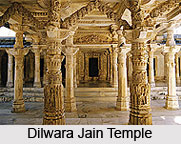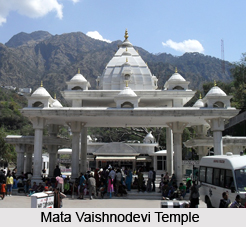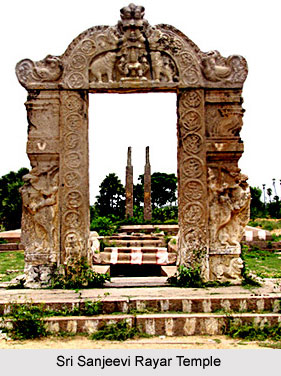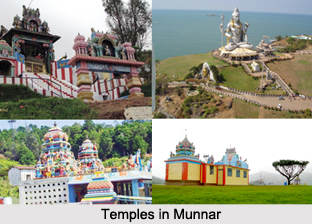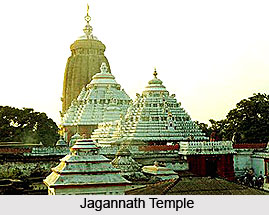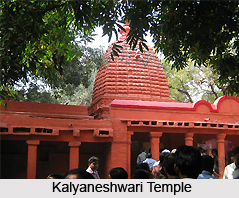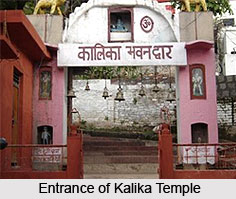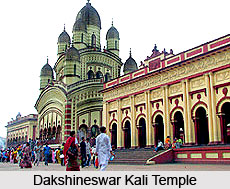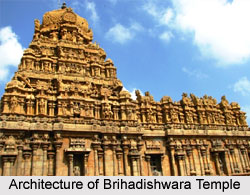Temple Jewellery in South India has a timeless camaraderie with the land itself. Tradition has its roots deep delved into the soils of South India and as obvious result temple jewellery is of paramount vitality in the Dravidian land and even the foreign invasion could not cater any significant amount of loss of them. Most of this jewellery was donated by the people to adorn the deities of the temples.
History of Temple Jewellery in South India
Indian jewellery art is at times divided into three kinds` temple jewellery spiritual jewellery and bridal jewellery. Temple jewellery of India initially used to be described as the jewellery used to adorn the idols of Gods and Goddesses. The statues In India were ornamented with chunky necklaces that were either strung with beads or crafted with intricate filigree. Amongst the other ornaments that adorned statues of deities were large chunky bangles, usually studded with gems. In addition, earrings, nose rings and anklets were also used.
The jewellery used to garnish the idols was later worn by temple dancers and at a snail`s pace; the designs became a branch of the Indian woman`s nuptial jewellery trousseau. Though the idols in an unremitting way began to be highlighted with jewellery, a rehearsal seen even today, the jewellery of Indian women also came be made on the prototype. Today, temple jewellery has become unfastened to the most accepted crafts of India. At some stage in festivals and occasions of worship of Gods, women wear temple jewellery believed to be auspicious and offer good luck .Jewellery items like pendants, bracelets, belts and brooches based on temple jewellery are very popular amongst women, during auspicious times, and wearing these is believed to bring fortuity to the person. The darling design for pendants is that of Ganesha the elephant headed divinity known to bestow good luck and good fortune. The other emblem, which is also, very much in claim, is that of the sacred syllable OM. These days, the temple jewellery of India is finding an aroma and quintessential zest amongst foreigners too.
In South India, the Shaivite temple jewelleries are divided into two broad categories-
The jewelleries offered to the main `Sivalinga` and those offered to the subsidiary gods and goddesses.
The main `Sivalinga` of any South Indian Temple is adorned with many costly jewels like necklaces, bracelets, armlets, bangles, rings and other ornaments. Thousands of pearls are crusted in the costliest jewelleries of the Sivalinga. During the rule of Chola Dynasty, the South Indian temples contributed a lot in the growth of the art of jewel making. The South Indian temples even maintained their own workshops, employed skilled goldsmiths and jewellers to fashion jewels, to test and evaluate them whenever it is needed. The master craftsmen were appointed and granted many royal titles on them for their mastery and excellence in the art. Several valuable and costly jewelleries are still well preserved in the Madurai temple. The most significant among them are the crowns made of gold encrusted with the nine gems or navaratna. Another important jewellery of this temple is the `Ratnachurmmandu`, a golden jewelled turban. It is worn on one of the festivals of Lord Sundaresvara, who is supposed to have worked as a casual labourer and carried the mud on his head on behalf of an old lady. During the rule of Vijayanagar kings, the heights of pomp and lavishness in offerings reached to the peak particularly at the time of Krishnadevaraya.
Thereafter, in the 13th century AD, the Pandyas also contributed a number of jewelleries to various temples at Madurai, Srirangam and Chidambaram. But most of the existing gems in South Indian temples today can be traced back to the Nayaka period. Many Nayaka rulers renovated the old temples and built new temples as well as adorned them with gems and jewelleries. They also offered dresses and jewelleries in the names of the famous saints of Tamil Nadu.
During the Chitrai festival at the temples of Goddess Meenakshi and Lord Alagar of Alagar Koil many types of jewellery were obtained as offerings. Most of these presents are still used at Madurai and Alagarkoil. The Nayaka period finest of gems and jewelleries can still be seen in temples at Mannargudi, Nachchiyarkoil, etc. of Tanjavur district.
Present Scenario of Temple Jewellery
The Srirangam temple has a huge jewel collection, which has historical significance. The names of the donors, mainly the later Nayakas of Madurai are inscribed in most of these jewels. These jewels of Tamil Nadu temples reflect the intricate workmanship of the art of jewellery of the Nayaka period.
These temple jewels have maintained their ancient forms till today. Even the outer influences from far off lands, particularly from the Mughal court could not bring much change in these jewelleries. But its affect in few of the jewels was quite visible. For example the shape of crowns and necklaces changed to the tune of Islamic traditions with the passage of time. The `conical kullah`, a golden cap of the Mughal court was introduced in the temples during the Nayaka period. The crown gifted by Tirumalai Nayaka to the temples was called Mughal Mudi, which was named after the Mughal tradition.
Raja Krishnaraja Wodeyar III of Mysore gifted most of the precious ornaments studded with fabulous jewels, which can be now seen in various temples. He presented a `Gandabherunda Padaka` (pendant) and the `Ramapatta-bhisheka pendant` in the Cheluvanarayana Swamy temple at Melkote.
Many devotees presented gold pendants having a number of figurative representations of various gods and goddesses at the Mysore temples. The Pandu-ranga temple of Pandarapura in Maharashtra has a gold pendant depicting the figure of Sri Vitthala, another form of Lord Krishna. The border of the pendant is adorned with `navaratna` stones. The jewelleries offered in the various temples of South India include the chains of coins (kasina sara), kadagas (bracelets), kankanas (wristlets), jjejjeranki (armlets), waist bands, tali (mangalasutra) and various types of headgear (kirita-mukntas).
All these jewelleries were attached to various parts of the body, such as the `mukha kirithi` (masks), `karnapatra; for ears, (chandra-bottu or surajaboitu), `abhaya` and `varada hastas` and padtnapithas, studded with glittering gems. These jewelleries were offered by kings and queens from time to time and now it can be seen in the various temples of Karnataka. Despite of all foreign effects the goldsmith of South India retained most of their traditional motifs and designs. One of such traditional jewel is a double-headed eagle, called `gandabherunda`, which was earlier the royal symbol of the Hoysala Empire and rulers. In all the South Indian jewelleries, this particular motif retained up to the Nayaka period. The temple jewelleries of South India have names based on the local flowers and birds. For example, one type of jewellery is known by the name `Tamarappu` (lotus flower), `Kallippu` and `Nerinchippu`, which are the names of flowers. Some of the jewelleries are also named after birds and animals, like kokku (crane), tavalai (frog), amai (turtle), makara (crocodile) etc.
All such jewelleries of South Indian temples are protected till today with great care. The temple authorities were given strict guidelines to protect the temple treasures. There are mainly two persons, who are assigned with the responsibility. The `Kaivistari` receives jewels on festive days and returns them to the `Kaiyatchri` just after their use. The latter then deposits them in the treasury. These are then locked properly and sealed by the third officer, `Mudradhikari`. During any festival time, when the deity is taken out for a procession adorned with the jewelleries, the temple guards called `Meykaval` keep a watch over them.












